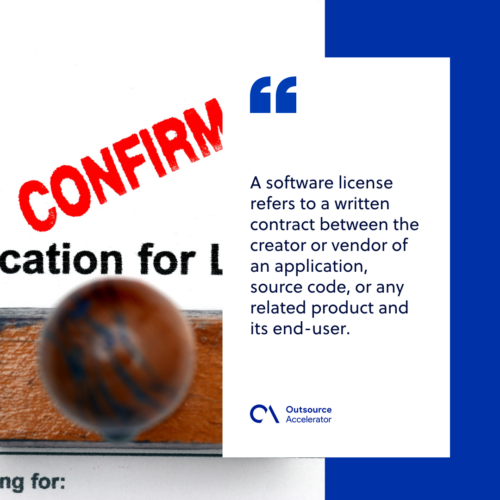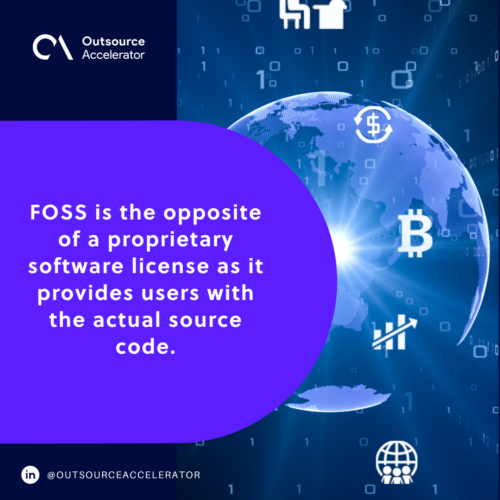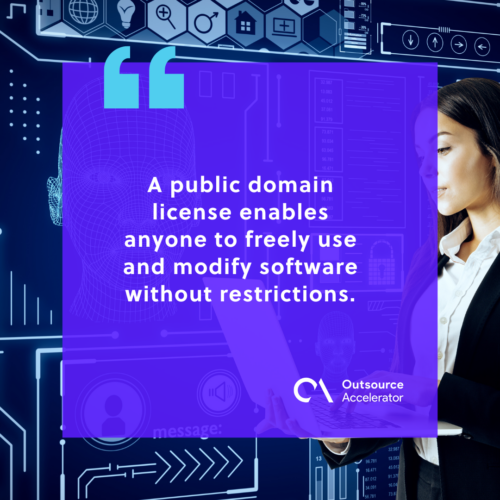What you need to know about software license

Nowadays, every organization utilizes software to manage and support its overall business landscape.
Software typically covers a company’s business processes. It also includes communication between the staff, consumers, clients, vendors, and suppliers.
Most software products have a software license that needs to be activated.
In many cases, it also requires a “terms and conditions” agreement before anyone can download, install, and access its programs.
For users, it is crucial to know the fundamentals of a software license as it lets them fully understand their responsibilities as a user. More so, it will help them rightfully comply with its limitations and other legal terms.
What is a software license?
A software license refers to a written contract between the creator or vendor of an application, source code, or any related product and its end-user.
Software licensing exists to secure and protect the intellectual property of its creators — the software developers. At the same time, it regulates the possible claims that may occur from its use.
It is also essential to know that a software license has various classifications and different restrictions, terms, support agreements, and costs.
For the end-user, a software license encompasses legally binding definitions incorporated in its distributions and its use.
As for end-user rights, it contains information regarding warranties, liabilities, and its installation.

How software licenses work
Users who acquire software will generally be required to comply with and accept an End User License Agreement (EULA).
A EULA is a written contract constituting the legal definitions of the relationship between the provider (licensor) and the end-user (licensee).
For cloud-based applications, specifically software as a service (SaaS), the software license usually includes the following:
- Period of the agreement
- Monthly or annual charges (per end-user)
- Terms of cancellation of the agreement
- Recovery of any specific changes done (if canceled during the agreement)
Meanwhile, the cost of a software license depends on the kind of software, the overall cost of software development, and how it is provided to the user.
Importance of software license agreement
A software license agreement is essentially a set of rules and permissions that dictate how users can utilize a particular piece of software.
These agreements, sometimes referred to as software license models, come in various forms, each outlining the terms and conditions under which the software can be legally used.
License agreements protect developers by establishing the boundaries of use and preventing unauthorized actions. They often include license notices, which are statements specifying the terms users must follow, ensuring clarity and adherence to the agreement.
Understanding the ins and outs of a software license agreement is crucial for both developers and users to navigate the legal framework surrounding software usage.
2 main categories of software licenses
A software license is usually divided into two categories: proprietary software and free and open-source software (FOSS). These two have significant differences contingent on the copyright law.
Proprietary software license
A proprietary software license aims to maintain the licensee’s source code, which is why reverse engineering is prohibited under its terms.
In this category, users will only be provided with an operational code to prevent end-users from reusing and modifying their source code.
Free and open-source software (FOSS)
FOSS is the opposite of a proprietary software license as it provides users with the actual source code. It authorizes users to reuse and remodel its software functions. It also allows end-users to inspect the software code fully.
Despite the main differences discussed above, warranties and warranty disclaimers, limitations of liabilities, and mutual responsibilities are indicated in both.
In connection, the essence of an open-source license lies in promoting a culture of sharing and innovation. This allows, for example, a software developer to contribute to and enhance the software, ultimately leading to a more refined product.
On the other hand, if the software has no license, it is usually viewed as public domain software or private unlicensed software.

5 different types of software licenses
Let’s break down the five types of software licenses:
1. Permissive licenses
Permissive, also known as Berkeley Software Definition (BSD) or Apache, is among the popular and commonly used open-source software licenses.
There are different variants of a permissive software license. These variants have different restrictions, copyrights, and requirements. Its use will also vary depending on the variant (private or commercial) and other stipulations.
2. Public domain licenses
A public domain license enables anyone to use and modify software without restrictions freely. It also allows users to reuse or incorporate the code into their projects or applications.
However, organizations should remember that public domain licenses may not often follow the best coding practices. They may not be within the acceptable standards of secured software.
Another thing to note is that software not covered by specified licensing terms may not always be a public domain code.

3. Lesser General Public License (LGPL)
In an LGPL software license, its developers are given rights to link their product to various open-source libraries within their software.
They can license their resulting code under the different license types, specifically in compiling or linking projects in an LGPL-licensed library.
4. Proprietary licenses
Proprietary software licenses ultimately secure and protect the developer from unauthorized use of the software.
A proprietary license is also characterized by its restrictive nature, as it typically limits the end-users ability to modify, distribute, or reverse engineer the software.
This exclusivity ensures that software users adhere to the end-user license agreement.
Unauthorized users will be restricted not only from using but also from copying, distributing, and modifying the software.
5. Copyleft licenses
A copyleft license, also known as a reciprocal or share-alike license, is a licensing mechanism that empowers developers to modify and distribute the licensed code as part of a software project.
This unique license condition is contingent upon the understanding that any derivative or modified code must also be distributed under a similar or identical software license.







 Independent
Independent




